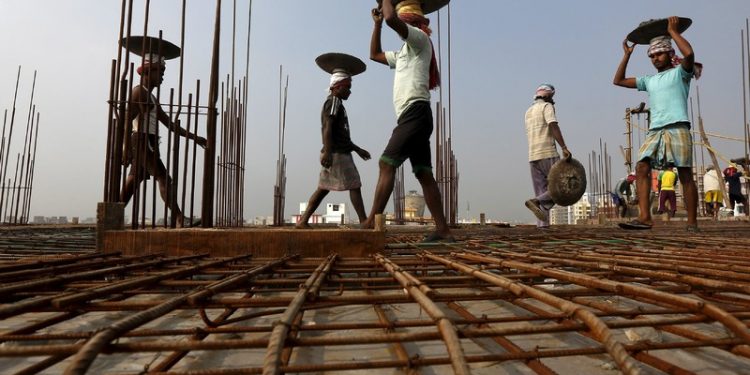SN Misra
India in April-June, 1991 shipped 67 tonne of gold to garner $600million from the United Bank of Switzerland and the Bank of England to tide over its precarious foreign exchange balance. PV Narasimha Rao as PM realised that market economics rather than socialism is India’s way forward. India changed its policy track from License Permit Quota Raj to Liberalisation, Privatisation and Globalisation. Dr. Manmohan Singh was familiar with the Washington Consensus coined by Prof. Williamson which advocated for free market in interest rate determination, exchange rate, free trade, fiscal discipline, moderate tax rate, encouragement of FDI and privatisation of PSUs. India accepted all these, except rapid privatisation of PSUs. Economic liberalisation in India was a natural corollary to the fall of the Berlin Wall in November 1989, and disintegration of the USSR in 1991 which capsised communism as an ideology. Francis Fukuyama in his iconic book ‘End of History’ prophesised that 1991 is the end point of history, with liberal democracy and free market taking firm roots.
The 30 years gone by have witnessed significant structural changes in the Indian economy. The share of agriculture and allied services which was around 28.5 per cent of GDP in 1990 came down to 15.4 per cent by 2020. Share of industries has gone up marginally from 27.3 per cent to 31.2 per cent. However, the major sectoral shift has been in the area of service sector where it has gone up from 43.9 per cent to 53.4 per cent. Inflow of FDI and FII has gone up from 2 per cent to 7 per cent. The most significant change has been the dominant role of private sector where its share of GDP has gone up from 1.5 per cent to 11 per cent. The average growth of 3.5 per cent per annum has nearly doubled during the period from 2000 to 2020. FE reserves of around $618 billion now can take care of 14 months of imports, as against two weeks in 1991! India is now a more private sector dominated, globally better connected economy. The high growth has also brought out around 300 million from the poverty trap.
The paradigm shift in growth has unfortunately co-terminated with a snail like movement in the human development parameters. India has slipped very badly on three development parameters of Millennium Development Goals (1995-2015). As against MDG target to reduce hunger to 26 per cent by 2015 India’s hunger percentage is around 40.1 per cent. About 65 per cent of adolescent girls are severely anaemic (Rapid Survey of Children, 2014). In Ease of Doing Business, India’s rank improved from 136 to 106, while in the Global Hunger Index it has moved up from 83 to 97th position.
The hoopla around high growth from 2004 to 2009 was also marked by very poor growth in job creation. As against a growth of 8.7 per cent during 2004-2009, the growth in employment was a measly 0.1 per cent. This mismatch is understandable as the manufacturing sector’s share which contributes significantly to job creation, remains stagnant at 16 per cent. The National Manufacturing Zone Policy, 2011 which envisaged an increase in the share of manufacturing from 16 per cent to 25 per cent and create an addition of 10 million jobs per year has remained an unfinished agenda. In contrast, China whose economic liberalisation started in 1980 has become a global manufacturing hub with manufacturing contributing 30 per cent of the GDP.
Economic liberalisation has not made much of a dent on rural distress. As per the SECC Report, 2011, the percentage of people who are landless and casual labourers is as high as 38.3 per cent. Illiteracy is rampant at 36 per cent with quality of educational outcome in rural government schools abysmally poor. The New Education Policy, 2020 has brought out how early childhood education and care (3-6 years) remains pathetic. The SECC Report brings out how around 75 per cent of rural household has income below `5,000. The NABARD Report brings out how people working in agriculture and non-agricultural activities in rural areas have an average indebtedness of around `80,000 per capita. The access to formal credits for agriculturalists is very poor as only 4 per cent have Kisan Cards. The rhetoric of doubling farmers’ income sits on shifting sands.
In a perceptive article, Nobel Laureate Abhijit Banerjee and Thomas Piketty in March 2019 have observed “Ram Mandir, Caste Reservation and Cows Slaughter” are more salient than important dimensions like better schooling, health facility, land and income re-distribution. The Indian Constitution in its Preamble combines the quest for individual freedom and liberty with the need to promote socio-economic justice for all. It envisages distribution of material resources, early childhood care, improving level of nutrition and minimising income inequality. Our tryst with free market economics has turned the constitutional mandate of socio-economic justice upside down. To be fair to the present government, economic liberalisation has brought in a sea change in embracing digital technology though the JAM (Jan Dhan, Aadhaar, Mobile number) trinity, GST reforms, abolition of top down planning through Planning Commission, bank insolvency code are testimony to the continuity in economic ideology despite a major change in political power.
The SDG has flagged zero hunger, zero poverty, quality education and health care as its four cardinal goals. India seems to be far away from these targets and the free market approach will not help. It’s time for the government to invest substantially more in quality public education, health care and bridge the digital divide which has widened during the Covid-19 pandemic. Prof. Jeffrey Sachs believes that this will require a collaborative development approach where government, business enterprises and NGOs are active partners. Robert Frost wrote: “We have miles to go before we sleep.” India’s tryst with economic liberalisation is an apt reminder to our rampant development deficits and the need to realise the constitutional mandate of socio-economic justice for all.
The writer is a leading voice in Development Economics.






































